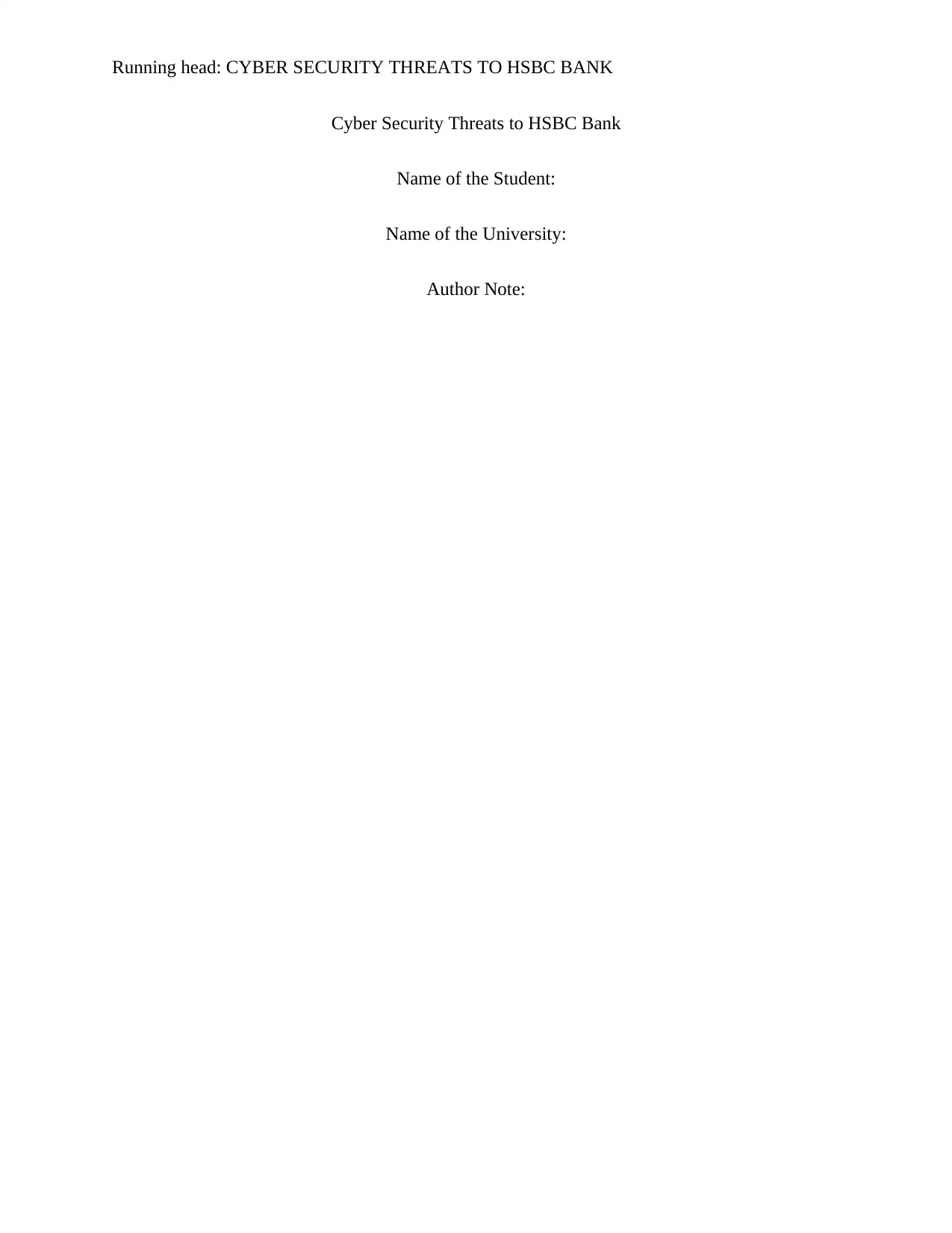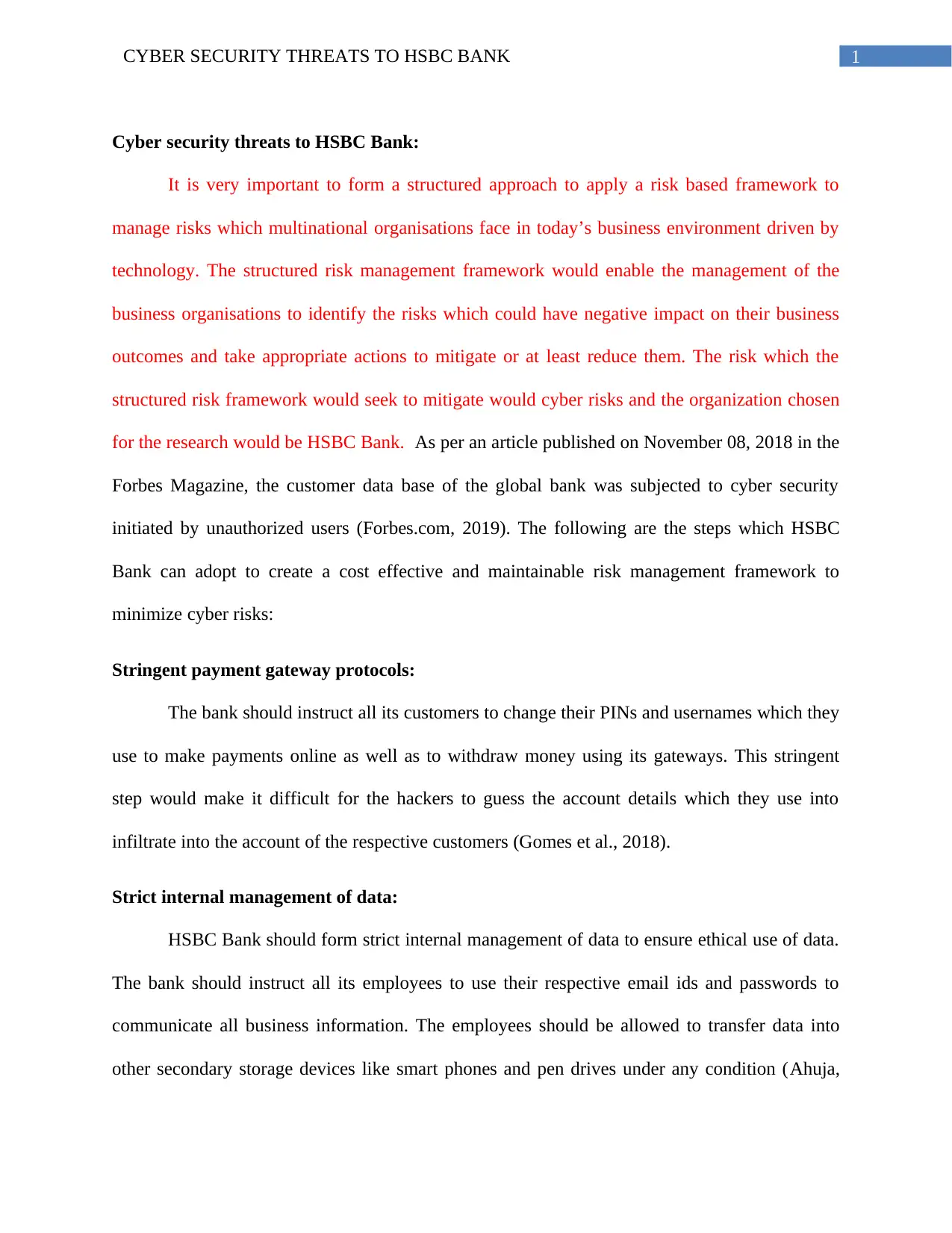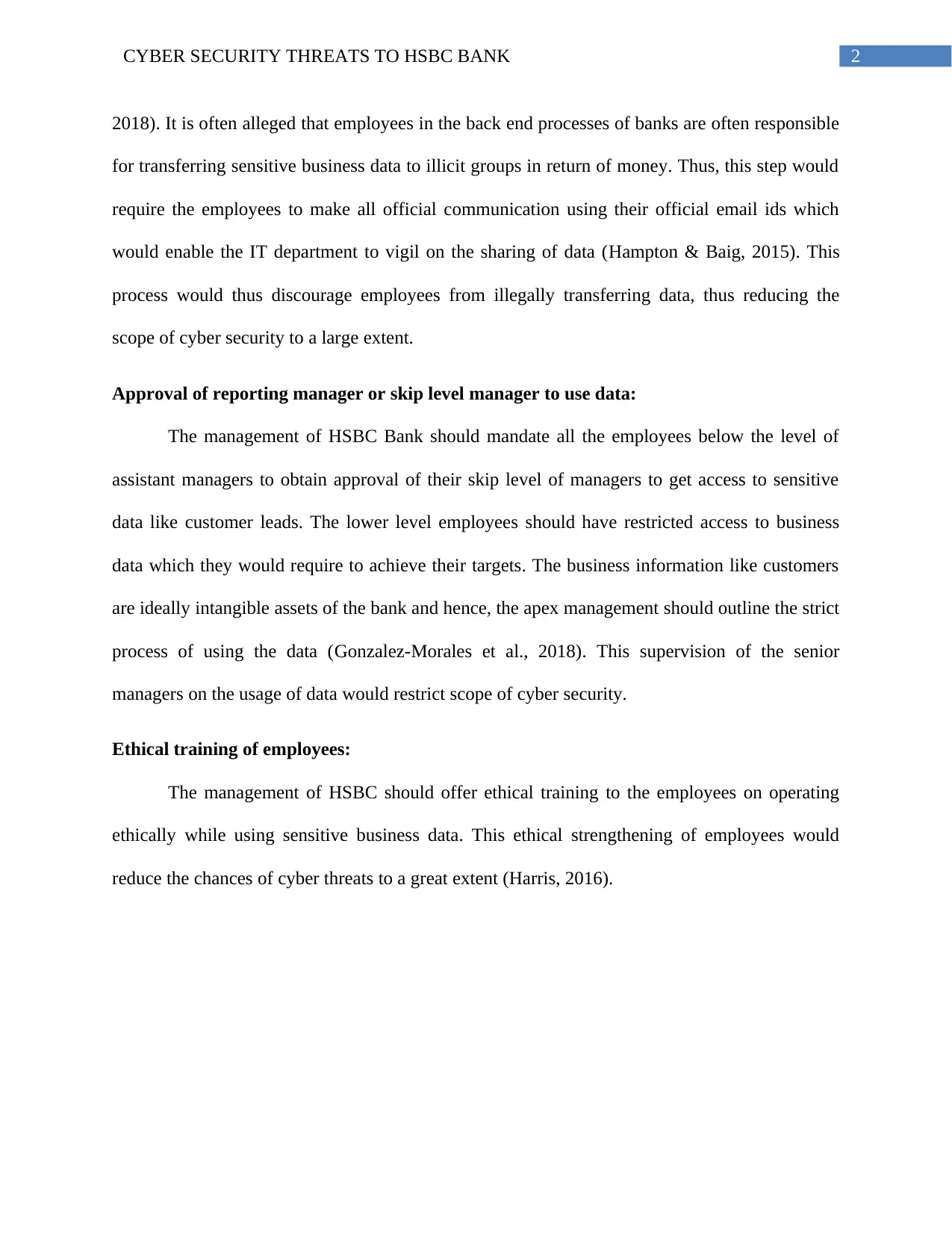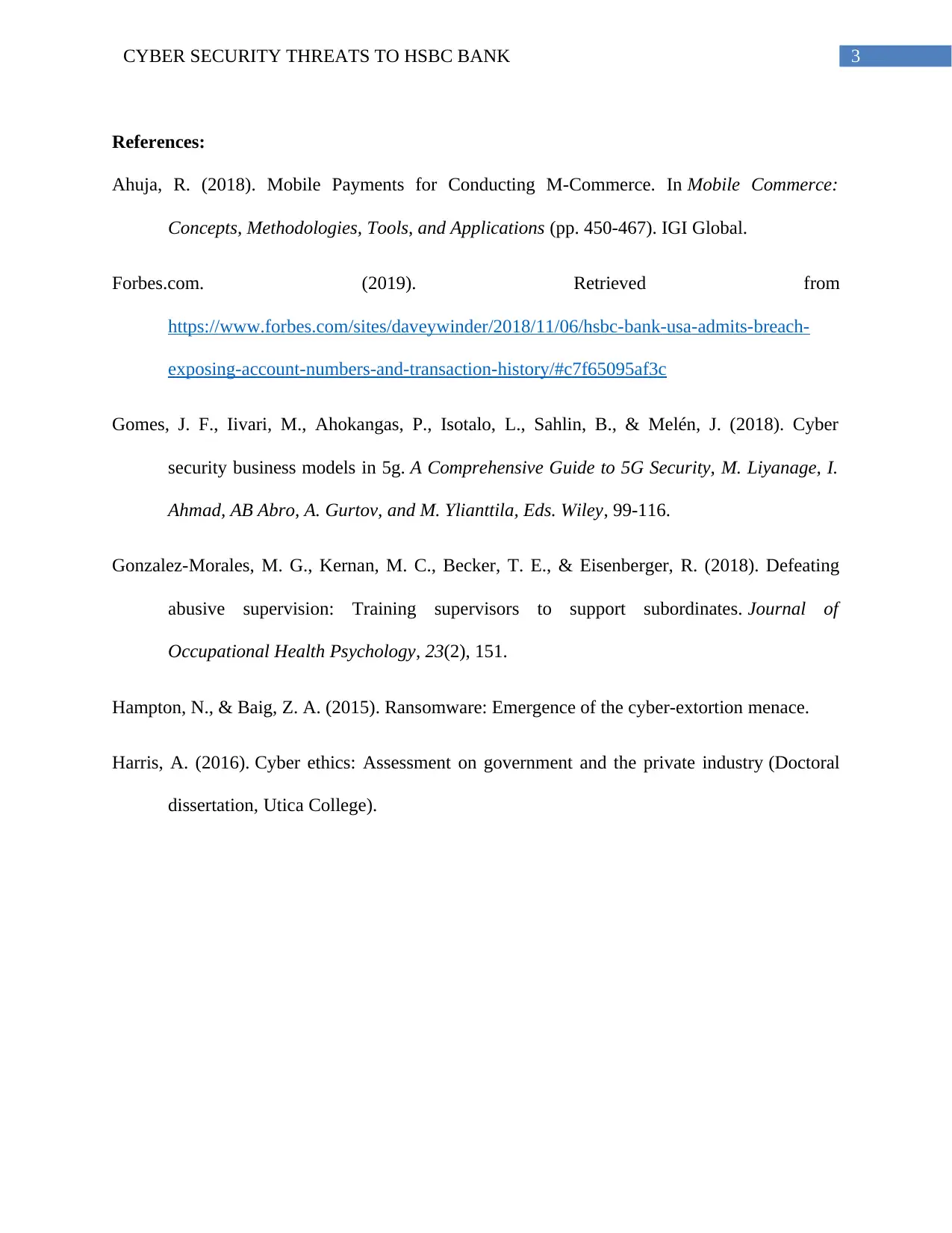An Analysis of Cyber Security Threats and Risk Management at HSBC Bank
VerifiedAdded on 2023/01/24
|4
|824
|54
Report
AI Summary
This report provides an analysis of the cyber security threats faced by HSBC Bank, a multinational financial institution, and proposes a risk-based framework for mitigation. The report highlights the importance of a structured approach to manage risks in today's technology-driven business environment. It discusses specific vulnerabilities, such as those related to payment gateways and data management, referencing a 2018 data breach reported by Forbes. The report suggests several strategies for HSBC Bank to minimize cyber risks, including stringent payment gateway protocols to protect customer accounts, strict internal data management to ensure ethical data use, requiring manager approval for data access, and ethical training for employees. The report emphasizes the need for a comprehensive approach to cyber security, encompassing technological measures and employee training to reduce the likelihood of cyber threats and protect the bank's assets.
1 out of 4











![[object Object]](/_next/static/media/star-bottom.7253800d.svg)